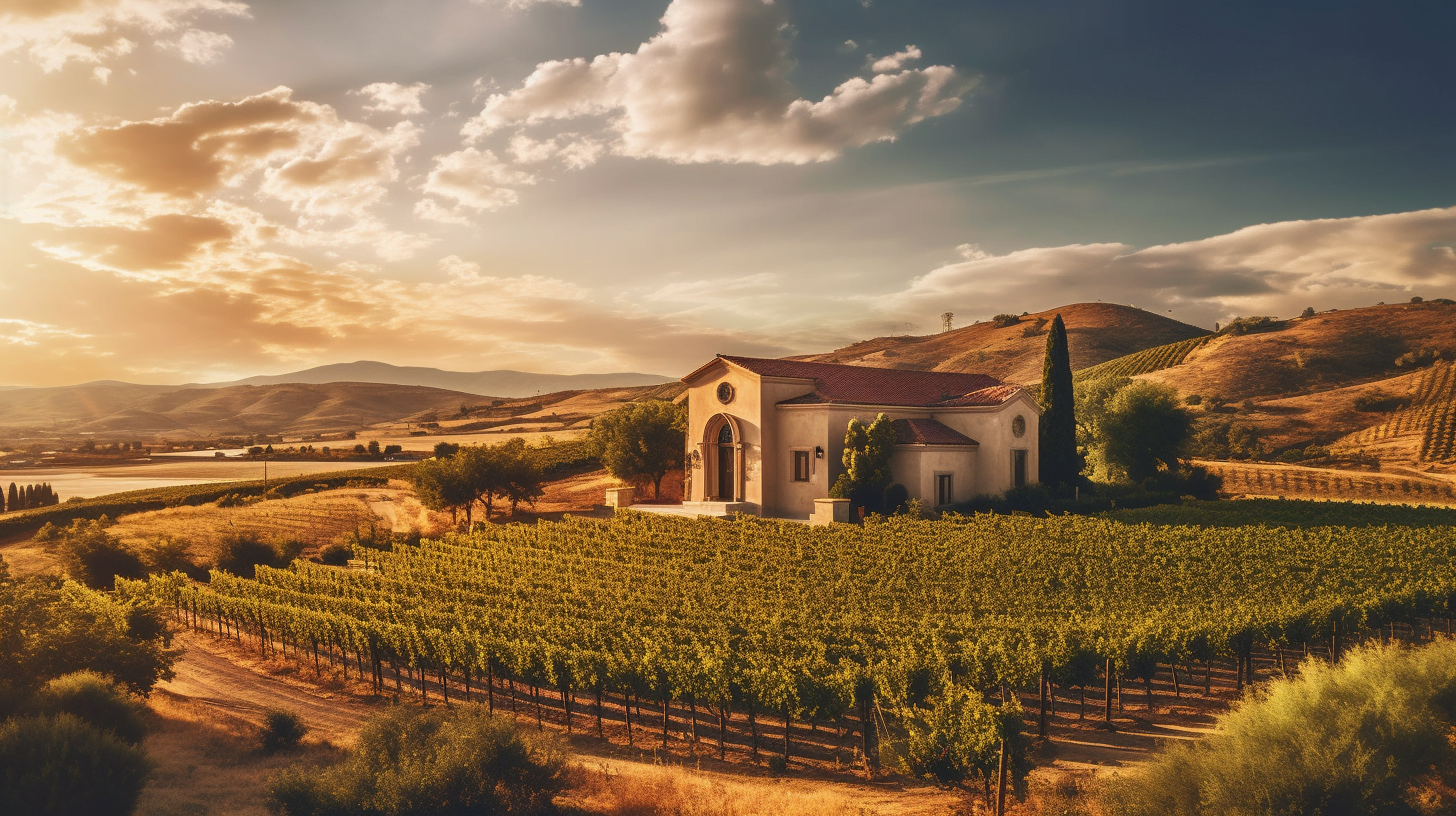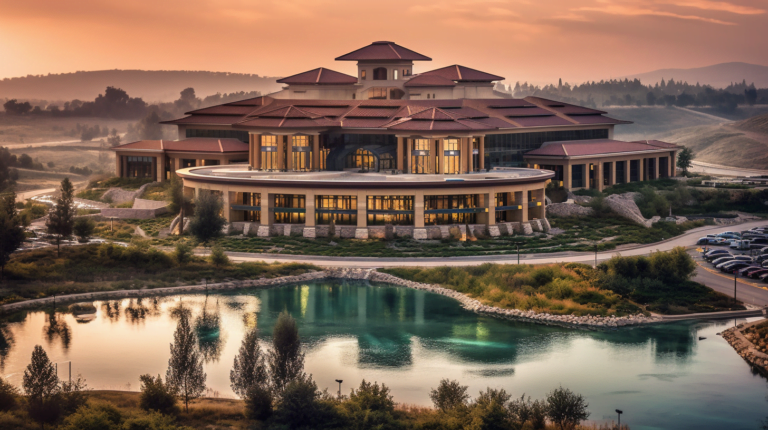Uncovering the Timeless Tale of Temecula’s Evolution 🕰️
Have you ever wondered about the history of Temecula? This small city in Southern California has a rich and fascinating past that dates back thousands of years.
From the early Native American tribes to the Spanish missionaries, Mexican ranchers, and American pioneers, Temecula has been shaped by a diverse array of cultures and events.
In this article, we will take you on a journey through time, exploring the key periods and events that have shaped Temecula into the city it is today.
From the arrival of the first humans to the building of railroads and highways, we will delve into the city’s past and uncover the stories of the people who have called Temecula home.
So, sit back and get ready to embark on a journey through history as we explore the fascinating and complex story of Temecula.
Key Takeaways
- Temecula has a rich and diverse history dating back thousands of years, with indigenous tribes living off the land for generations before the arrival of the Spanish.
- The Spanish Mission Era and Mexican Period had a profound impact on Temecula’s culture and economy, with ranching becoming a significant industry.
- American pioneers arrived in the mid-1800s, introducing new technologies and promoting cultural assimilation.
- Temecula has experienced unprecedented growth in recent years, driven by economic development and a thriving tourism industry, while still honoring and celebrating the rich cultural heritage of Native American tribes.
The Early Inhabitants of Temecula
You’re probably wondering who the first people were to call Temecula home. Well, let me tell you, they were indigenous tribes that lived off the land for thousands of years.
These early settlements were home to many Native American tribes, including the Luiseno and Cahuilla tribes. They were skilled hunters, gatherers, and farmers who relied on the natural resources of the area to survive. The Luiseno and Cahuilla tribes made their homes in the Temecula Valley for generations before the arrival of the Spanish.
They built their homes using natural materials like willow branches, bark, and mud. These early settlements were often located near sources of water, like rivers and streams, which allowed the tribes to irrigate their crops and support their communities.
The early inhabitants of Temecula were skilled artisans and craftsmen who created intricate baskets, pottery, and other items from natural materials. They also had a rich oral tradition and passed down their stories and history through storytelling.
The rich cultural heritage of these Native American tribes is an important part of Temecula’s history and continues to be celebrated and honored today. With the arrival of the Spanish, a new era in Temecula’s history began. Their influence would shape the region in new and significant ways.
The Spanish Mission Era
During the Spanish Mission Era, life in the region was like a river flowing with the ebb and flow of cultural exchange. Spanish colonialism had a profound impact on the area, and the conversion of native people to Christianity was a significant part of this. The Franciscan missionaries who arrived in the area were determined to spread their faith to the indigenous population, and they did so by establishing a series of missions throughout California.
The Spanish mission system was a complex one, with a hierarchy of religious and secular officials who oversaw the day-to-day operations of the missions. Each mission was designed to be self-sufficient, with its own agriculture, livestock, and crafts. Native people were brought to the missions, where they were taught European farming methods and crafts, and were also converted to Christianity. The missions served as a way for the Spanish to exert control over the indigenous population, and as a means of expanding their empire.
Despite the many challenges faced by the native people during the Spanish Mission Era, the period was also marked by cultural exchange and innovation. The missions brought new technology and agricultural methods to the region, and the native people adapted these methods to suit their own needs. The result was a unique blend of Spanish and indigenous cultures, which can still be seen in the region today. This cultural exchange would continue into the next period of Temecula’s history, the Mexican Period.
As the Spanish Mission Era came to a close, the Mexican government gained control of California, and with it, the missions. The Mexican Period would bring a new set of challenges and opportunities to the region, as the area became a part of a new nation.
The Mexican Period
Now you’ll learn about the Mexican Period in Temecula’s history.
Mexico gained independence in 1821 and Temecula became part of the Mexican territory.
The Mexican-American War had a significant impact on Temecula, leading to its incorporation into the United States.
Adjusting the paragraph structure in the input, you’ll learn about the Mexican Period in Temecula’s history. Mexico gained independence in 1821, and Temecula became part of the Mexican territory. The Mexican-American War had a significant impact on Temecula, leading to its incorporation into the United States.
Mexican Rule and Independence
As you read about Mexican Rule and Independence, you’ll feel a sense of pride knowing that this beautiful city was once a part of a rich and vibrant era in history.
The period of Mexican rule and independence saw the city of Temecula being shaped by two significant factors: cultural influences and political tensions. Under Mexican rule, the city experienced a unique blend of Spanish and Mexican cultural influences that can still be seen today, from the architecture to the cuisine.
However, political tensions were also prevalent during this period, as the Mexican government struggled to maintain control over its vast territories. As a result, the city of Temecula was often caught in the middle of political power struggles.
Despite this, the city continued to thrive, with ranching becoming a significant industry in the area. These political tensions would eventually lead to the Mexican-American War, which had a profound impact on the city of Temecula.
The Impact of the Mexican-American War
You’ll understand how the Mexican-American War left a lasting impact on this city, as it changed the political landscape and set the stage for future growth and development.
The causes of the war were complex, but ultimately boiled down to a dispute over territory. The United States believed that Texas was rightfully theirs, while Mexico maintained that it was still a part of their country. This disagreement led to conflict, and the Mexican-American War began in 1846.
The consequences of the war were significant for Temecula. Key figures, such as General Stephen W. Kearny and Commodore Robert F. Stockton, played important roles in the war effort. The Battle of San Pasqual, fought nearby, was a crucial engagement that saw Mexican forces defeating American soldiers.
Ultimately, the United States emerged victorious, and the Treaty of Guadalupe Hidalgo was signed in 1848. This treaty ceded California, including Temecula, to the United States. This event would shape the future of the city, as it would soon become a hub for American pioneers looking to settle in the area.
The Arrival of American Pioneers
Despite potential resistance from indigenous populations, American pioneers arrived in Temecula in the mid-1800s, bringing with them a new era of settlement and development.
The American pioneers’ impact was significant. They introduced new technologies, such as irrigation systems and farming techniques, which allowed for more efficient and productive use of the land. Additionally, the pioneers promoted cultural assimilation in Temecula, as they brought with them new ideas, beliefs, and practices that influenced the local way of life.
As more pioneers settled in Temecula, the town began to grow rapidly, with new businesses, schools, and churches being established. However, the influx of American settlers also led to conflicts with the native population, who were displaced from their ancestral lands and forced to adapt to a new way of life.
Despite this, the pioneers continued to push forward with their vision of progress and development, ultimately transforming Temecula into a thriving community.
The arrival of American pioneers in Temecula set the stage for further expansion and growth. The town became a hub for transportation and commerce, with the building of railroads and highways. Temecula was able to connect with other regions and expand its economy, leading to even more development and prosperity.
The Building of Railroads and Highways
As you continue your journey through the history of Temecula, it’s important to note the significant impact that the Southern Pacific Railroad had on the area.
The arrival of the railroad in the late 1800s helped to transform Temecula into a bustling agricultural hub, allowing for easier transportation of crops and goods.
In addition to the railroad, the construction of the Temecula Valley Freeway in the 1960s also played a major role in shaping the city’s growth and development.
The Impact of the Southern Pacific Railroad
When the Southern Pacific Railroad arrived in Temecula, it forever changed the landscape and economic opportunities of the area. The railroad expansion brought economic growth as it made it easier to transport goods and connect with other parts of the state. This opened up new markets for Temecula’s agriculture, including the exportation of grain, cattle, and produce to Los Angeles and San Diego.
Furthermore, the arrival of the Southern Pacific Railroad brought an influx of people and businesses to the area. Temecula became a hub for trade and commerce, attracting merchants, bankers, and investors. The railroad also brought tourists to the area, as people traveled by train to experience the beauty and tranquility of Temecula’s countryside.
This growth in population and commerce set the stage for the construction of the Temecula Valley Freeway, which further transformed the area’s transportation infrastructure and economic prospects.
With the Southern Pacific Railroad’s impact on Temecula, the area became a major contributor to the state’s economy, gaining more recognition and importance. The construction of the Temecula Valley Freeway was the next significant step in the area’s development, further improving transportation and accessibility.
The Construction of the Temecula Valley Freeway
You’ll love hearing about how the Temecula Valley Freeway came to be and how it paved the way for even more growth and development in the area. The construction of the freeway began in the 1980s and was completed in the early 1990s.
The expansion of the freeway brought about new opportunities for economic growth and community development. The freeway connected Temecula to other major cities, making it easier for people to commute and businesses to transport goods.
Despite its benefits, the freeway expansion also sparked controversy among the community. Some residents were concerned about the environmental impact and the destruction of natural habitats. Others were worried about increased traffic and noise pollution.
Despite the opposition, the construction of the freeway continued, and it has since become an essential part of the Temecula Valley’s infrastructure. As the city continues to grow, the Temecula Valley Freeway serves as a vital artery for transportation and commerce. It is a testament to the city’s commitment to progress and development.
With that said, let’s take a look at Temecula in the modern era.
Temecula in the Modern Era
To truly understand Temecula in the modern era, it’s important to recognize the growth and development that has taken place in recent years.
Modern growth in Temecula has been unprecedented, with new housing developments and commercial centers popping up all over the city. This growth has led to an influx of residents and businesses, making Temecula one of the fastest-growing cities in Southern California.
Economic development has been a driving force behind Temecula’s growth. The city has attracted new businesses and industries, creating job opportunities for its residents. Temecula’s thriving tourism industry has also contributed to its economic success, with visitors flocking to the city to experience its wineries, golf courses, and other attractions.
The city’s commitment to economic development has resulted in a vibrant and prosperous community.
Exploring Temecula’s historical sites and landmarks is a great way to gain a deeper appreciation for the city’s rich history. From the Old Town district to the Temecula Valley Museum, there are numerous sites and attractions that offer a glimpse into the city’s past.
Whether you’re a resident or a visitor, taking the time to explore these sites is well worth it, as it provides insight into the city’s growth and development over the years.
Exploring Temecula’s Historical Sites and Landmarks
You’ve learned about Temecula’s transformation into a modern city, but did you know that it’s also home to a number of historical sites and landmarks? Exploring architecture and cultural significance is a great way to experience the city’s rich history.
Take a tour of Temecula’s historic landmarks and learn about the people and events that shaped its past.
First on the list is the Temecula Valley Museum, which houses artifacts and exhibits that tell the story of Temecula’s Native American, Mexican, and American pioneer history. Here, you’ll get a glimpse of the city’s past through photographs, documents, and interactive displays.
The museum is located in the heart of Old Town Temecula, which is another must-see historic site.
Old Town Temecula is a charming district that features preserved 19th-century buildings and storefronts. It’s a great place to stroll around, take in the sights, and shop for souvenirs. The district is also home to a number of restaurants and bars, so you can grab a bite to eat and relax after your tour.
Another landmark that’s worth visiting is the Vail Headquarters, which was once a working cattle ranch. Today, it’s a destination for shopping, dining, and entertainment. The site features beautifully restored buildings that date back to the 1800s, and it’s a great place to learn about Temecula’s ranching and agricultural history.
Exploring architecture and cultural significance is an immersive experience that’ll make you appreciate Temecula’s rich history even more.
Conclusion
Congratulations! You’ve journeyed through time and explored the rich history of Temecula. From the early inhabitants to the modern era, you’ve seen how this city has evolved over the years.
However, as you reflect on the past, you can’t help but feel a sense of sorrow for the injustices and hardships that were endured by the Native American tribes and Mexican settlers.
Despite the challenges, the people of Temecula persevered and built a thriving community that continues to thrive today. As you visit the historical sites and landmarks, you’re reminded of the resilience and strength of the human spirit.
Temecula’s history is a testament to the power of perseverance and the importance of preserving our past for future generations.
So, as you leave Temecula, take with you the memories of its rich history and the hope that it inspires for a better tomorrow.







